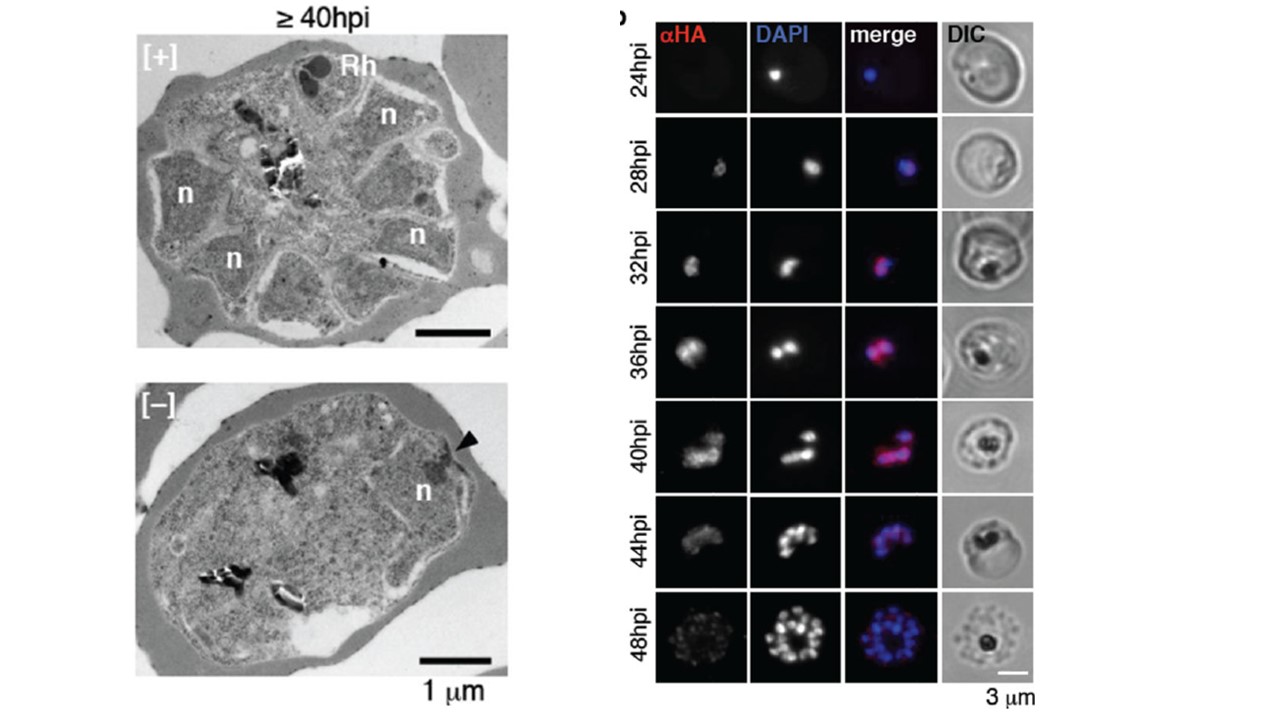Left" Ultrastructure of PfCRK4-depleted parasites (D10 parent, representative of n ≥ 25 cells per condition); arrowhead, spindle pole body; n, nucleus; Rh, rhoptry. At ≥40 hours post invasion (hpi), parasites [+] Shield-1 (i.e., wild type PfCRK4 levels) segmented into daughter cells, containing nuclei and rhoptries (apical organelles required for merozoite invasion), which are characteristic of mature schizonts (top). In contrast, parasites cultured [−] Shield-1 (i.e., PfCRK4 is depleted) showed no nuclear division or apical organelle biogenesis (bottom). Right" Nuclear localized PfCRK4 is essential for trophozoite-to-schizont transition and DNA Immunofluorescence detection of PfCRK4-HA-DD in blood stage parasites (representative of three biological replicates). PfCRK4 is localized to the nucleus of late trophozoites and schizonts, with the signal greatly diminished in segmented schizonts that had undergone cytokinesis.
Ganter M, Goldberg JM, Dvorin JD, Paulo JA, King JG, Tripathi AK, Paul AS, Yang J, Coppens I, Jiang RH, Elsworth B, Baker DA, Dinglasan RR, Gygi SP, Duraisingh MT. Plasmodium falciparum CRK4 directs continuous rounds of DNA replication during schizogony. Nat Microbiol. 2017 2:17017 PMID: 28211852.
